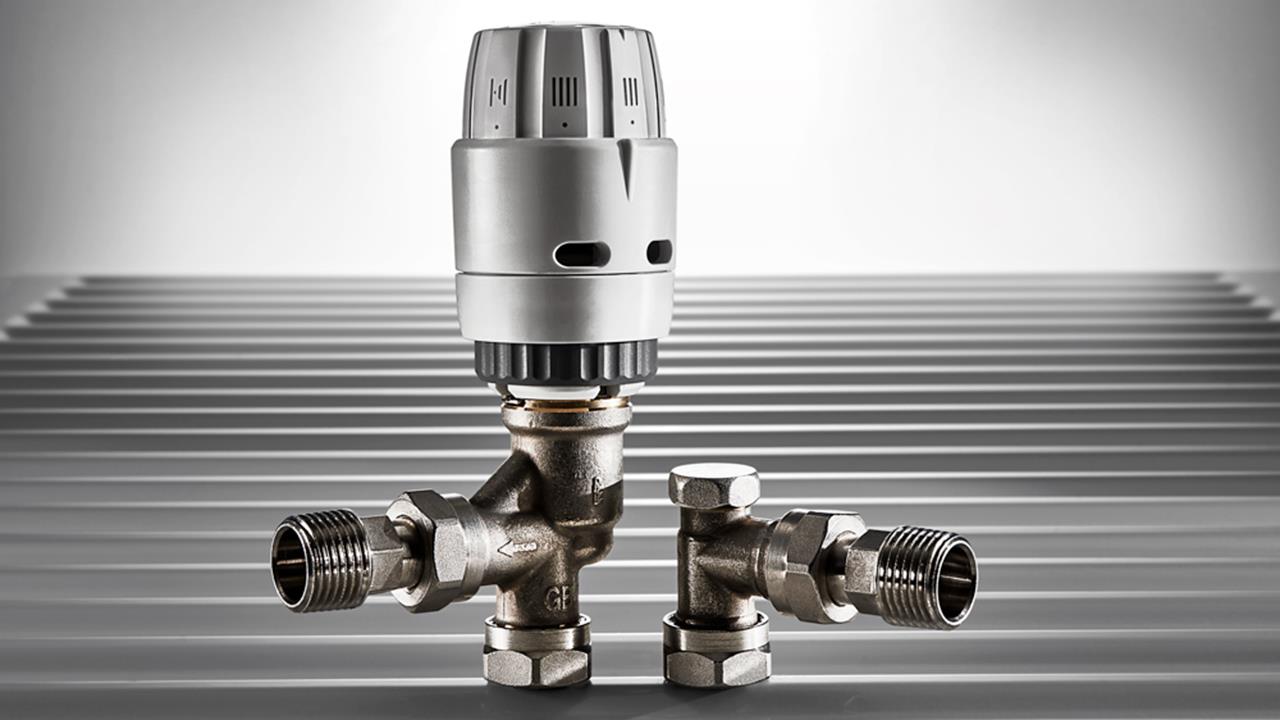

As every heating professional knows, hydronic balancing is the process of optimising the flow of water in a hydronic heating system by balancing the system pressure and so ensuring that water flows equally to individual radiators. This helps prevent over or under supply to radiators occurring. Apart from the discomfort factor, an unbalanced system is less efficient, resulting in potentially higher fuel bills for already hard-pressed consumers.
If a customer complains of cold radiators, some installers may consider increasing the pump speed or adjusting the boiler thermostat to a higher temperature setting. Although a seemingly quick fix compared with balancing, this may not solve the problem and will increase the system’s energy consumption even further.
Basic principles
Tests conducted independently at the Salford University Energy House showed that without effective control and balancing boilers will operate in condensing mode for around 5% of the time, whereas with, it’s closer to 80% of the time. However, despite these efficiency benefits, and being considered best practice, balancing is sometimes neglected during the installation and commissioning of domestic heating systems.
This could be down to lack of knowledge or confidence – or because of the time it can take using traditional methods. Whatever the reason, let’s start by looking at the method most installers will be familiar with – adjusting the lockshield valves on each radiator to ensure each radiator receives the correct flow of hot water to heat the space in which it is fitted.
This process can be very time-consuming: firstly, air must be removed from the system by bleeding the radiators. The heating is then turned off and radiators left to cool down before the heating is turned back on. TRVs (if fitted) are then set to the fully open position, and the lockshield valves, by turning them anti-clockwise. The installer checks by touch which radiators get hottest quickest. Return valves on the hottest radiators will probably need to be restricted by 50% or 60% to start with, however, to balance a poorly designed system, it may be necessary to close a valve more than 80%.
Dynamic solution
An accurate flow limiter with a presetting function is an alternative static balancing solution whereby the installer calculates the flow required for each radiator and adjusts to ensure the required amount of water is delivered. Although more accurate than a lockshield valve, this form of balancing is only optimised for the coldest days (winter) when the heating system is operating at full (design) load. This means flow could be unnecessarily high on milder days (spring/autumn). If TRVs are fitted the room temperature can be controlled, but flow through the radiators will be the same, resulting in over-delivery and wasted energy.
A dynamic solution like the new Danfoss RAS-B2 functions as both a flow limiter and dynamic pressure valve. It limits flow through the TRV but does this independently of pressure fluctuations, so it is optimised for all days. The valve’s built-in differential pressure controller ensures that pressure drops over the valve remain at a constant level, which means flow through the valve is maintained at both full and partial loads.
Quick and easy balancing
As well as improved comfort, the RAS-B2 can enhance system efficiency as the return temperature is lower (condensing boiler efficiency is best at below a return temperature of 55oC) and the pump can run at a lower speed and so consumes less electricity. Furthermore, because presetting of the desired flow is done on the RAS-B2 valve, rather than on the lockshield, installers could save up to two hours of working time and correctly balance a system in a fraction of the time it would normally take. And balancing can be made even easier by using the Danfoss Installer App when fitting RAS-B2 valves. This handy tool provides an interactive guide to calculating, recording, and documenting the correct flow and subsequent setting for each radiator on a smartphone or tablet.
Installers can get hands on with the latest heating controls and tech by joining the Danfoss Installer Life Tour currently making its way around Britain. They can hop on board the Tour Bus when it comes to their area and meet the Danfoss team, check out new products, join training sessions and learn new tips and tricks of the trade. For tour dates and locations, go to installer.danfoss.com/uk-gb/events-and-training and sign up for the newsletter.
installer.danfoss.com/uk-gb/news/say-hello-to-the-ras-b2
If you'd like to keep up-to-date with the latest developments in the heating and plumbing industry, why not subscribe to our weekly newsletters? Just click the button below and you can ensure all the latest industry news and new product information lands in your inbox every week.